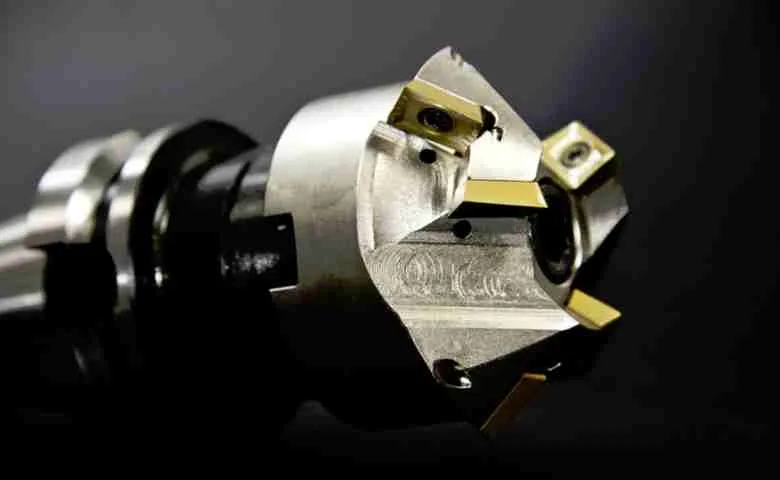Last Updated on February 21, 2023 by Admin
Vertical machining is a widely deployed process across manufacturing and construction, so it’s worth understanding the basics whether or not you intend to use it yourself in the near future.
To that end, we’ve put together a few key things you need to know about it, so that you aren’t in over your head if you encounter it in the field.
Table of Contents
What Is Vertical Machining and How Does It Work?
Vertical machining is a type of metal working process that involves cutting away excess material from a piece to create the desired shape and size. This procedure utilizes a specialized vertical machine, or VMC (vertical milling center), which typically consists of several rotating tools mounted on an armature.
The primary tool used in this process is called an endmill, but other types of cutters can also be employed depending on the application needs. The endmill rotates at high speed as it cuts through the workpiece material, allowing for precise control over the finished product’s dimensions in comparison to manual operations or alternative methods such as 3D printing or laser-cutting technologies.
Additionally, due to its efficiency and flexibility when compared with traditional manufacturing processes like lathe turning, vertical machining has become increasingly popular among construction professionals looking for more efficient ways of producing parts quickly, while maintaining accurate precision tolerances within tight deadlines.
Buying a High-Performance Vertical Machining Center: Tips to Ensure You Get the Best Value for Your Money
When looking to purchase a vertical machining center, it’s important to make sure you get one that will provide optimal performance and value. Investing in the right VMC can save time and money on your projects down the line. Here are some tips for finding the best machine for your needs:
First, consider what size of workpiece you’ll be machining as this will help determine which type of VMC is right for you. You can invest in a previously-owned vertical machining center if you want to make acquiring one with a suitable capacity more affordable.
Next, think about how many tools and cutting heads you need – if more than one tool or head is necessary then an advanced CNC model may be required instead of just manually operated ones.
It’s also essential that all safety features such as guards are included with any new equipment purchased so always check these before making a final decision on purchasing.
Finally, do research into customer reviews so that you can find a machine that offers the best combination of features, performance and price and falls within your budget.
Related Posts:
- Are Industrial CNC Mills The Future Of Modular Home Construction
- Total Station in Surveying: Types, Uses and Applications
- 28 Most Common Construction Tools with Names and Pictures
- The importance of Stone CNC Machine in Construction Sector
Understanding the Different Types of Cuts Used with Vertically Milling Machines
Vertical machining is a versatile process that can be used to create parts from almost any type of material. While end mills are often used for this purpose, there are several other types of cutting tools available that offer specific benefits depending on the material and application requirements.
Here’s an overview of some common cutters:
End Mills
These have flutes along their sides which allow them to remove large amounts of material quickly while remaining accurate in their cuts. They come in many shapes and sizes so they can handle a wide range of materials, including aluminum alloys and plastics.
Face Mills
These flat-bottomed cutters make it easy to cleanly machine surfaces without leaving behind deep grooves or gouges like end milling does when too much pressure is applied during cutting operations.
Turning Tools
These cylindrical shaped bits provide high levels of accuracy due to their ability to rotate materials while cutting.
Wrapping Up
As you can see, vertical machining makes it possible to take on all sorts of materials and produce components from workpieces with ease, accuracy and efficiency. Consider using one on your next project, and you’ll be in for a treat.
FAQs
Vertical machining is a type of CNC machining that involves using a vertically oriented spindle to cut and shape materials. Unlike horizontal machining, which uses a horizontally oriented spindle, vertical machining is better suited to working with smaller, more complex parts.
Vertical machining is used in a wide range of industries, including automotive, aerospace, and medical device manufacturing. Some common applications include drilling, milling, and tapping of complex shapes and contours, as well as the creation of molds and other precision parts.
Vertical machining offers several advantages, including the ability to work with small, intricate parts; the ability to create complex shapes and contours with ease; and the ability to work with a wide range of materials, from aluminum and steel to plastics and composites.
To get the most out of your vertical machining operations, it’s important to use high-quality cutting tools and tool holders, maintain proper spindle speeds and feeds, and ensure that your machine is properly calibrated and maintained. Additionally, using advanced CAM software can help you streamline your programming and machining processes and optimize your overall performance.


